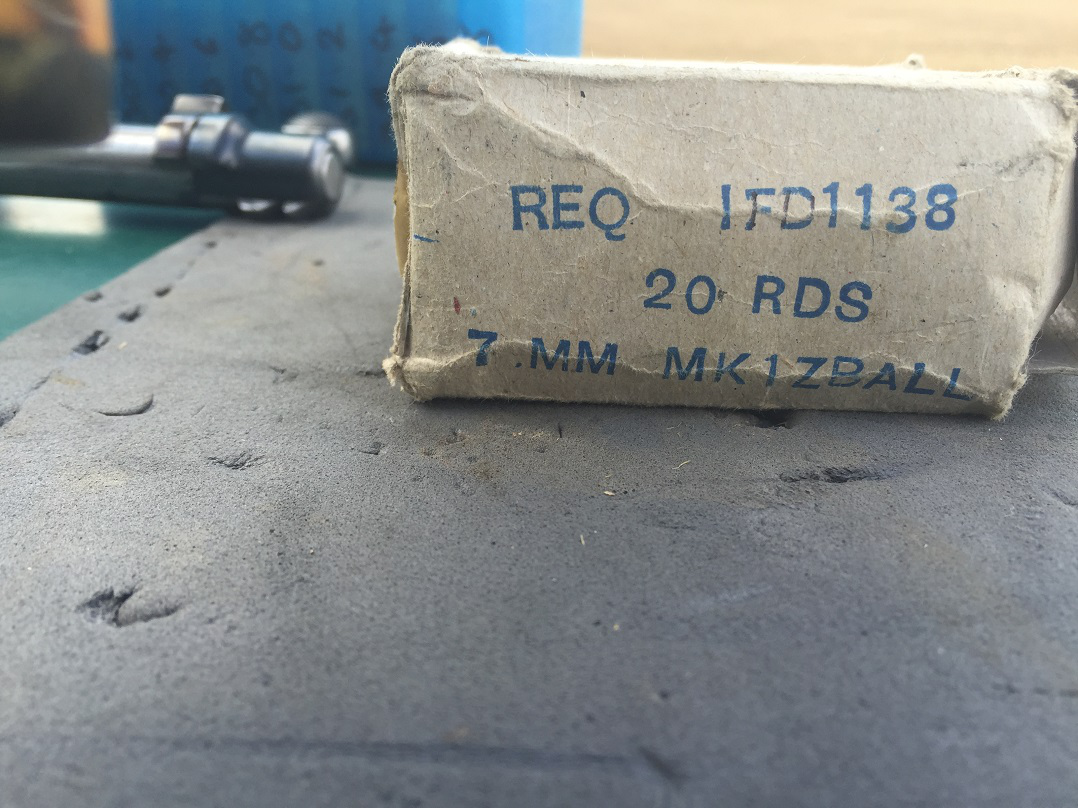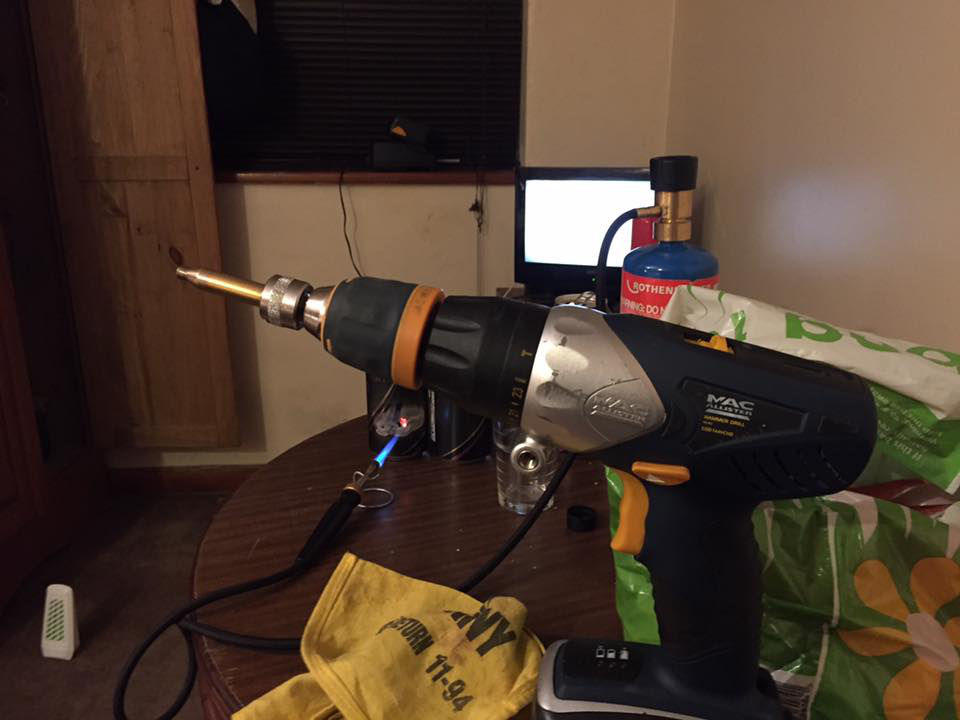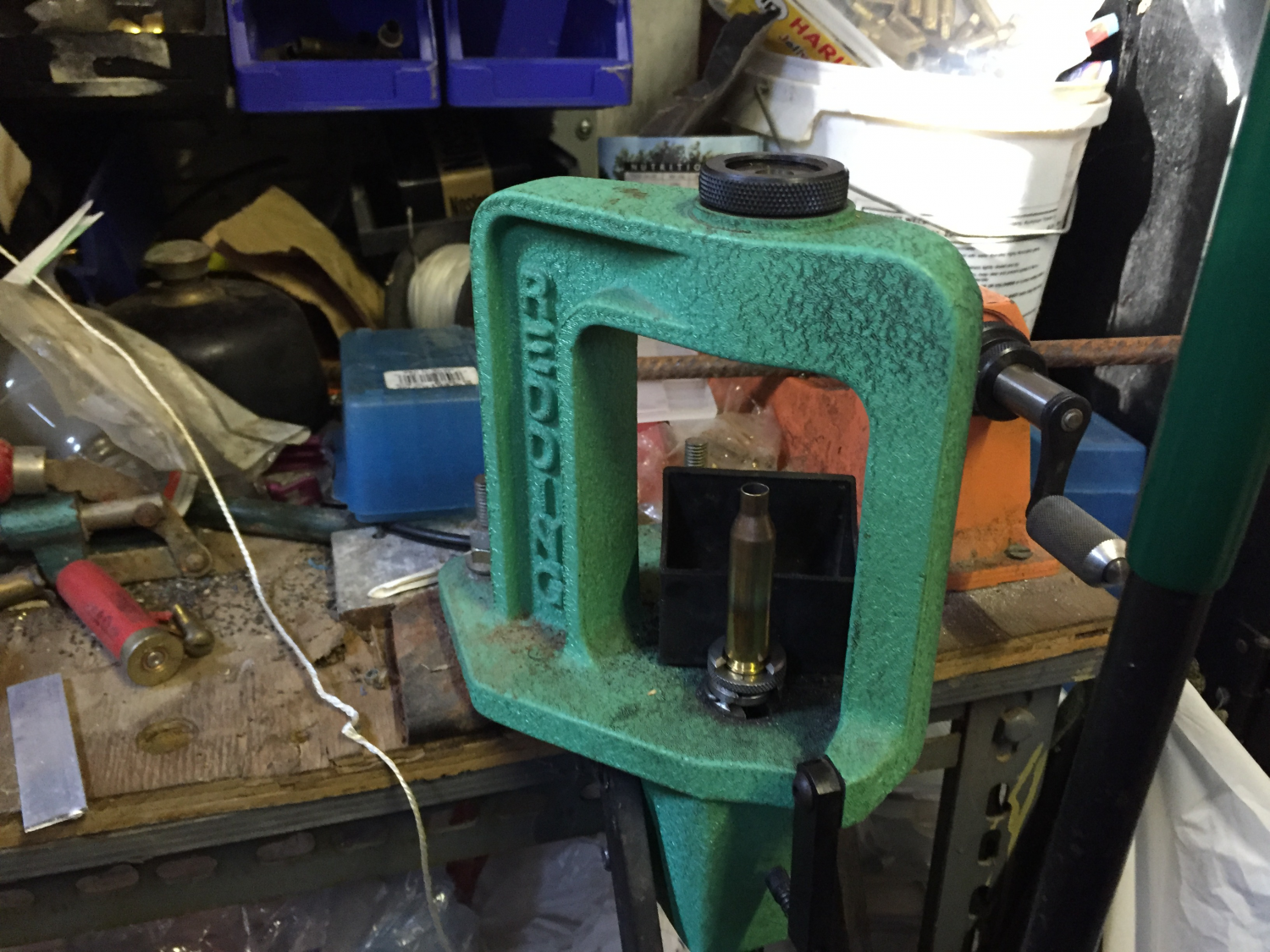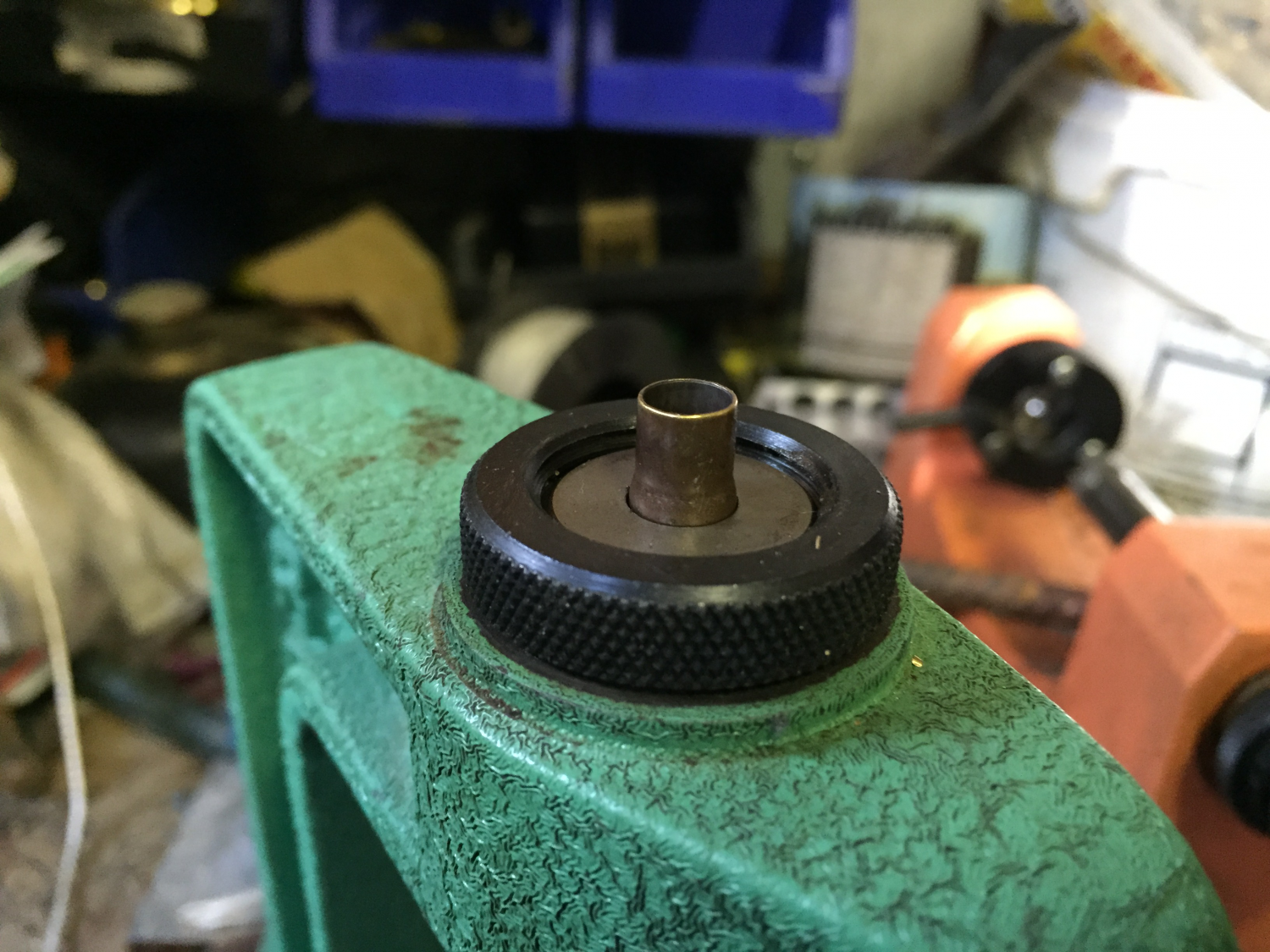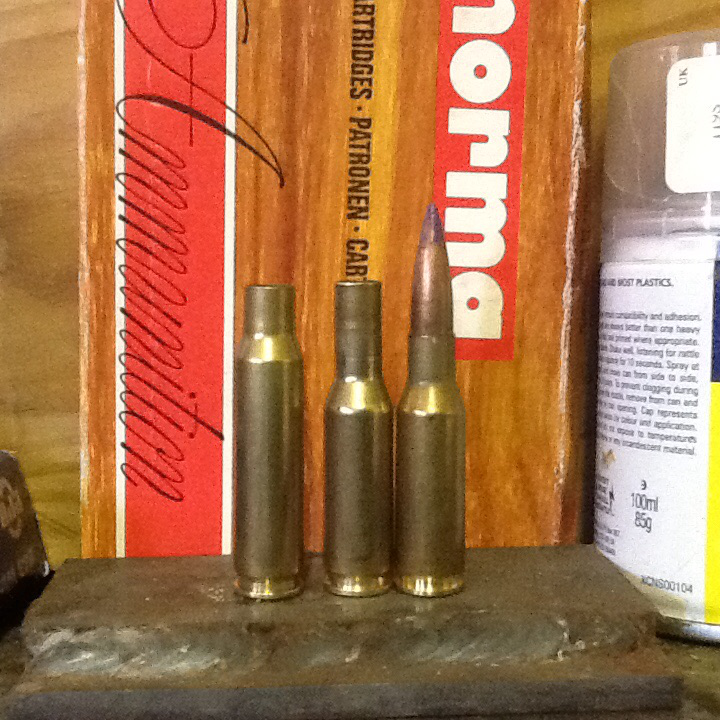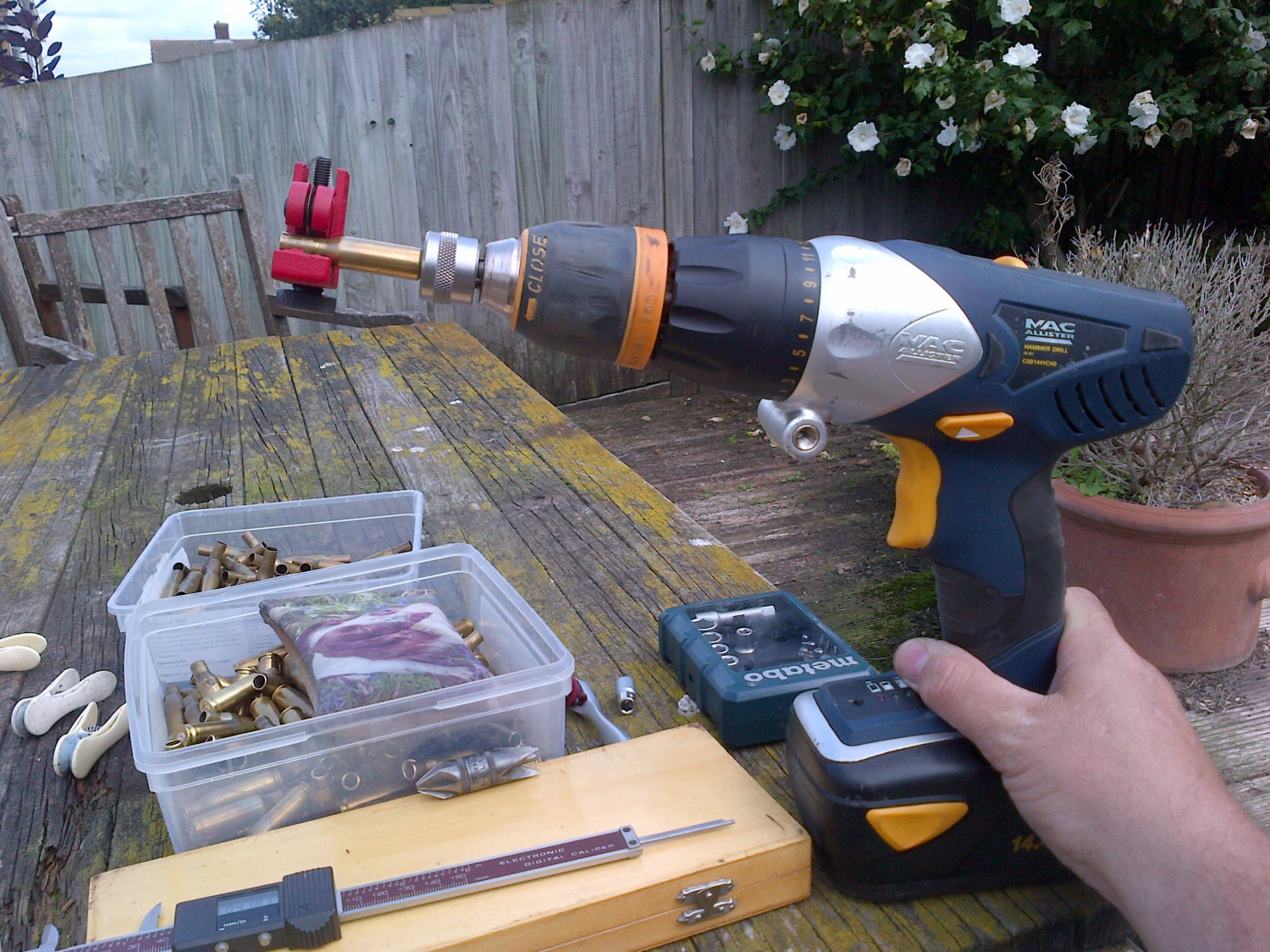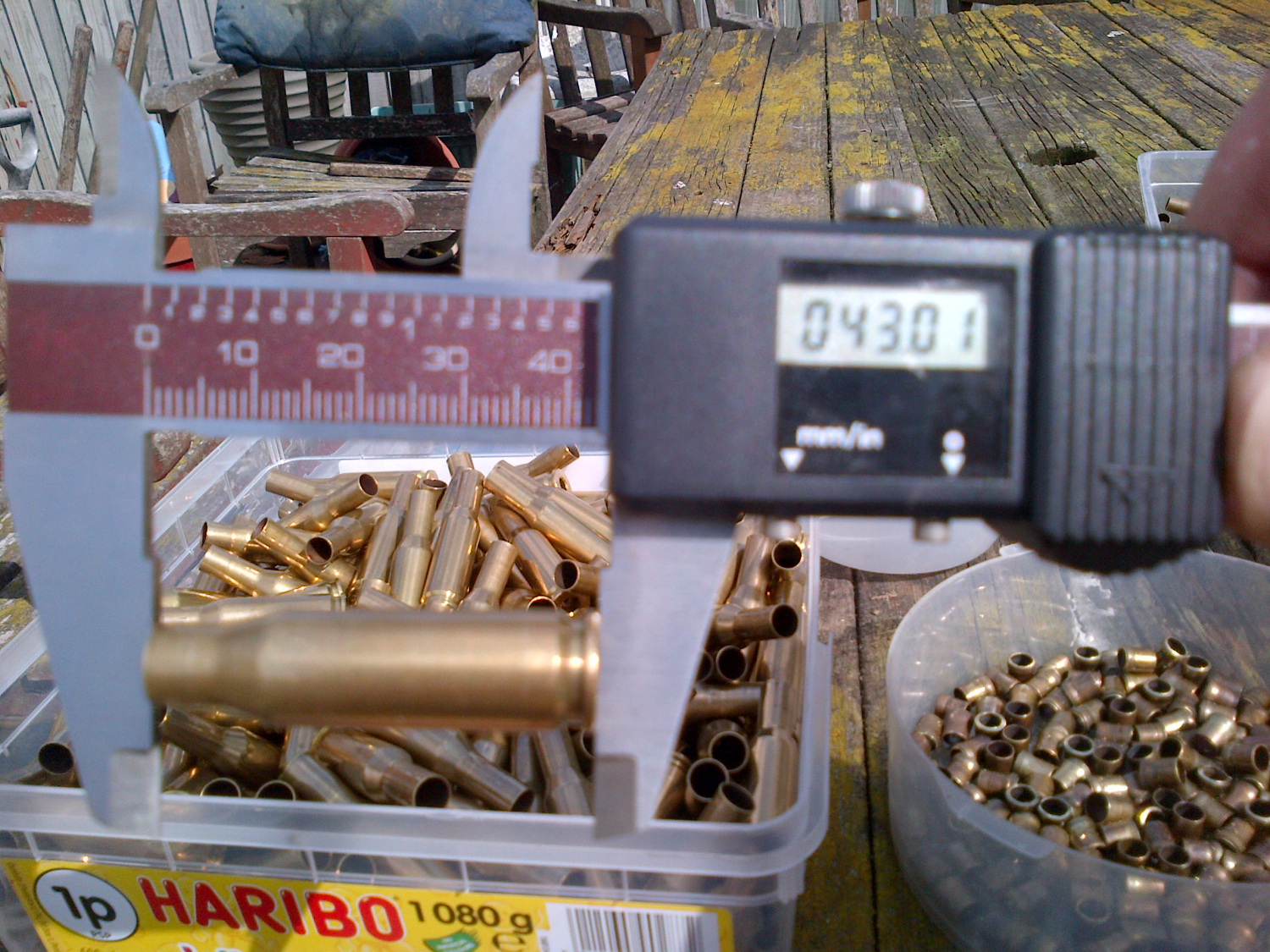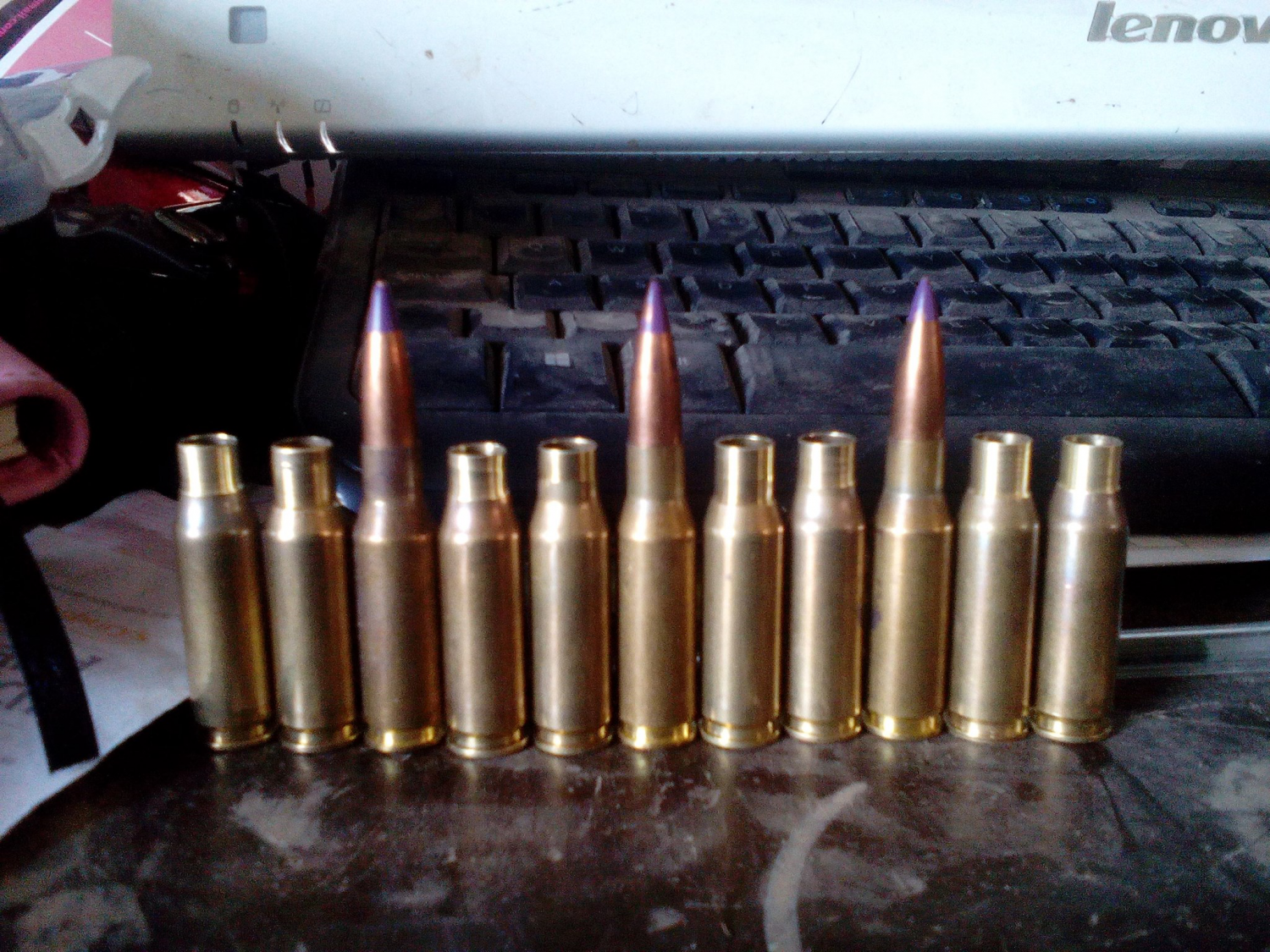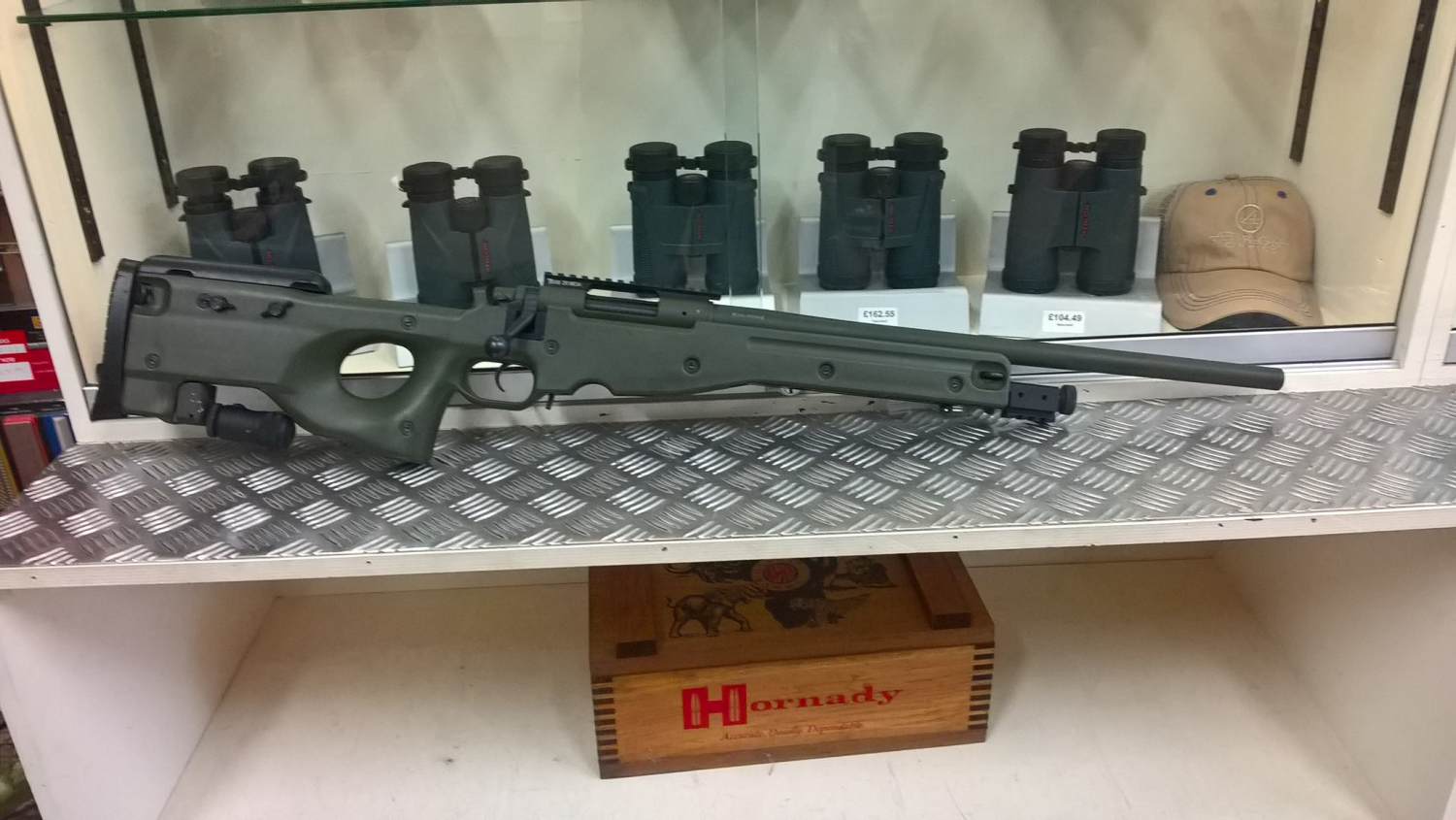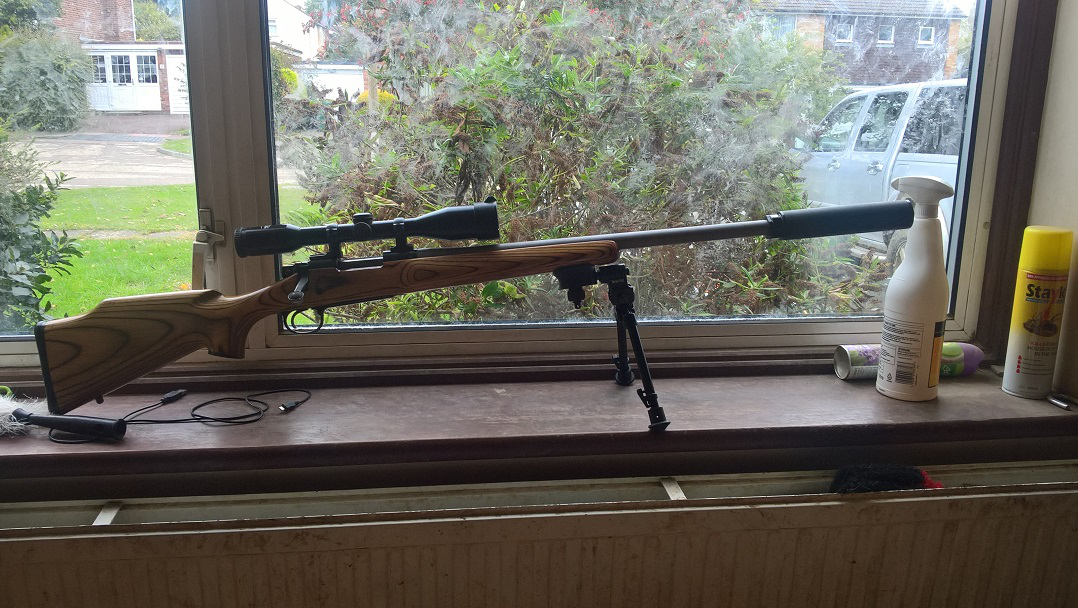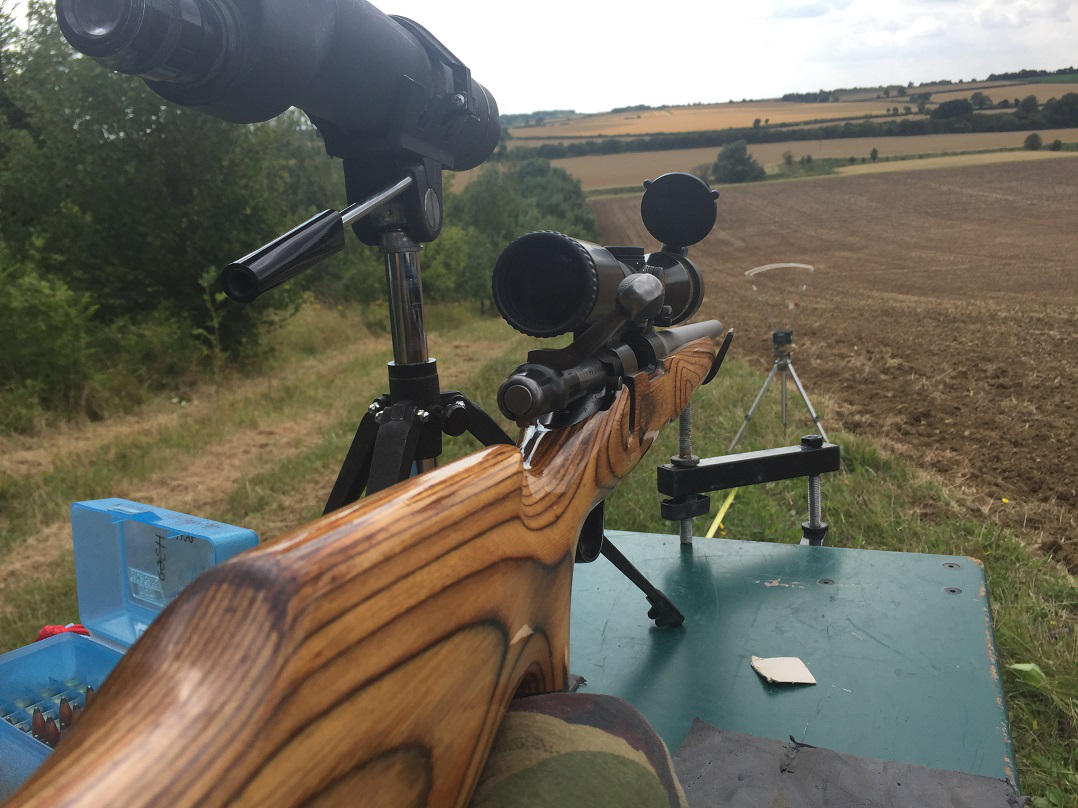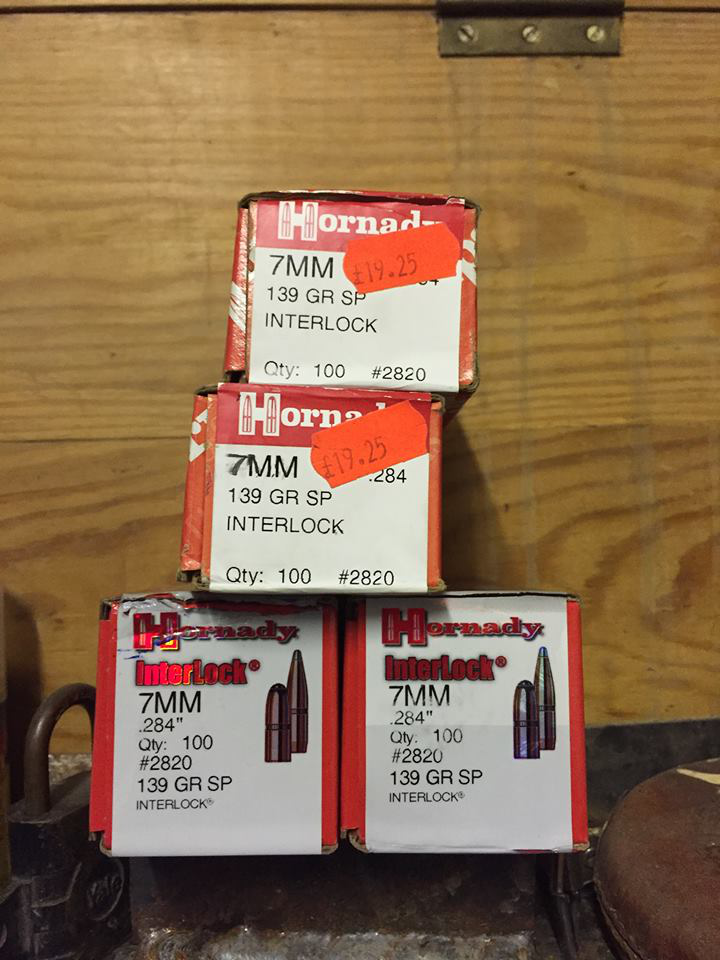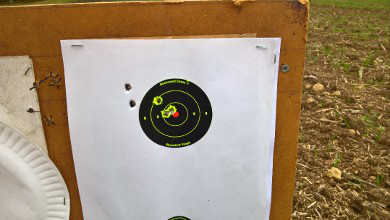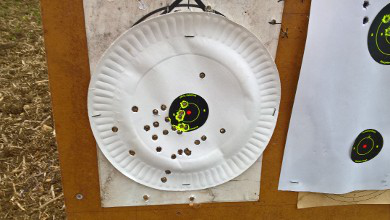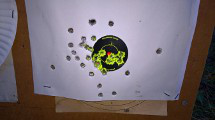The following is a guest article written for TFB by reader Tim about his efforts with his friend Paul to recreate the historical .280 British (7x43mm) round developed for the EM-2 and FAL rifles during the early pre-NATO rifle trials of the late 1940s. Enjoy!
This all started about two years ago when I happened to be lucky enough in a sealed bid auction to acquire a box of Radway Green 1970 production 7mm Mk. 1Z ammo for the Rifle No. 9 or EM-2 as it is known.
I posted online and was ridiculed for opening the box and letting some fellow cartridge collectors share in my good luck. Ah well, anyway a very good friend suggested we lobby to have an EM-2 built so we can fire the ammo. Common sense prevailed and I acquired 3 Remington 700 rifles with receivers long enough for a 50mm case and proceeded to find a gunsmith who would rebarrel them for us.
We chose to make our own brass as 20 Berdan primed cases (and that number was getting less every month) wouldn’t last long. Research led us to a UK gunsmith who had made one on a Ruger No. 1 a few years ago but he hadn’t really pushed the cartridge much beyond the minimum deer legal limit here of 1700 ft-lbs. We new that with good quality brass, modern primers, bullets and powder we could better the performance of the original round and its nemesis the 7.62 x 51 mm NATO beast.
I won’t go into history here, that’s being saved for a HBSA lecture and has frankly been covered elsewhere including very comprehensively on The Firearm Blog.
Anyway we found a gunsmith, reamers were ordered and money handed over for 2 rifles to be built.
Both were to have 20” barrels, partly because the short FN option was 20” and this showed problems with the improved .280/30 ammo and the fact that we would be using sound moderators which for some strange reason (perhaps the four to six inch extension helps) testing earlier with a 6.5 Grendel had shown a slight increase in muzzle velocity (mv) using a moderator.
With the rifles ordered we set about converting brass. I had originally wanted to use one manufacturers brass only but as it turned out we thought different types would allow a choice to be made later.
We are still converting brass as we speak and are currently looking at the option to use Lapua .308 Palma with its small primer pocket as again the Grendel testing has shown this to be a good option.
As a firearms dealer I have an account with Redding who supplied me with the dies needed for the work.
I should add that in addition to Paul who lives nearly 200 miles away, a former work colleague known as the Kiwi or Kiwi John assisted me greatly in my very steep learning curve of case forming.
Case Forming
No. 1: The Annealing
As I hadn’t done this before a trip to my Kiwi friends place showed me enough to get started and using kit from my local plumbers mate and Lyman I was able to anneal a few hundred likely suspects. Basically put the case in the case holder and spin it through a flame until the brass changes colour far enough down the body to allow the shoulders to be set back.
No. 2: Setting Back the Shoulder
I used my Redding Boss press for this, anything else I guessed may not be man enough.
This is the annealed brass in the press; you can see I have annealed almost half way down the case, no actual idea how far was needed at this point.
Below you can see the case protruding from the die, depth settings were hit and miss and dome visually against a factory round:
Here is a case formed on this occasion from a .243 case hence its weird double stepped neck shape:
You can see here a factory .308 case next to a .308 case that’s been set back and a factory round of .280/30. There is quite a bit of neck to trim.
No. 3: Neck Trimming
I chose to first do a coarse neck trim using a small pipe cutter from my local plumbers mate. This has now trimmed over 400 cases and cost me about £5. To speed things up I used the Lyman case holder in my drill:
This produced some good results:
No. 4: Neck Turning
I then had the drama of case neck turning and fine trimming. This was assisted by the Kiwi to start with and I am currently using a Lyman kit but may be looking at sending the next batch to a friend with a hobby lathe to get a level of uniformity which I seem unable to achieve by hand turning and I am sure is affecting the consistency of my test results (more of which later) and we know consistency is the true measure of quality.
I then test loaded some dummy rounds. This showed up a few problems which we had missed in the case forming process.
You can see above that the results of hand turning with a cheap drill isn’t great, I have a friend who is close to taking on the lathe work, I’m hoping this will give us the desired consistency.
Whilst all this was going on the rifles were close to being completed and test ammunition was sent so that the proof house could stamp the barrels. The factory ammo went missing and the proof house loaded up ammo using the prepared cases we sent. This showed up issues with steps we had missed out.
The cases on neck turning do seem to expand slightly, this seems to be a by-product of the brass turning and the cases need to be put through a full length resizing die and given a final polish before reloading.
I loaded my first batch with 120 grain bullets, this was down to load data being developed by a friend using the previous Ruger No1 data and quick load giving us some suggestions.
Powder selection was interesting as the original RG loading was not commercially available. We settled on a maximum load of 32 grains of Vihtavouri N133 (Vit N133) and selected a starting load of 30 grains and we would fire a couple of factory rounds to establish a base line. One of the issues here was we were firing without sound moderators as the thread adaptor hadn’t been ordered by me in time.
Some gratuitous rifle porn pictures, this rig is Paul’s and wasn’t used in the testing:
The rig below is mine built on a 22-250 receiver:
Below is the original August afternoon testing session:
Test rounds were 120 grain Sierra Gamekings
No group sizes were shot and the rifle scope was only adjusted enough to print on the paper for safety’s sake. The scope mounts were swapped for two piece ones before the next testing session when a moderator was available. Please see the part two updated with Stamford results for the testing that used 120 grain Barnes TSX bullets and 140 grain Hornady Interlock bullets:
These loads were also used to create a zero point with the final mounting option for the Schmidt and Bender 6×42 Scope. The picture below was shot with 120 Barnes TSX:
The main target was just something to aim at but at least forty rounds of 140grain loads printing here at 100 m. The loads were started using Vit N133 from 30.5 grains to 35.3 grains and Reloader 15 from 34.9 to 36.1 grains. We achieved the magical 2700 fps and 2000 ft/lbs, below is the narrative for an online post on the Army Rumour Service:
120 grain testing:
Factory 1970’s production test round 140 grain bullet was 2479 fps
The next four rounds (first of five failed to register on chrono) were:
30. grains N133 120 grain Sierra soft point
2485
2553
2520
2499
average of 2514 fps
30.2 grains
2561
2537
2471
2506
2532
average of 2521 fps
30.4 grains
2553
2513
2518
2521
2538
average of 2528 fps
30.6 grains
2567
2539
2550
2527
2529
average of 2542
30.8 grains
2566
2525
2492
2533
2509
average of 2525
31 grains
2551
2571
2541
2603
2576
average of 2568
31.2 grains
2592
2572
2591
2599
2622
average of 2595
31.4 grains
2619
2625
2655
2678
2612
average of 2637
31.6 grains
2621
2594
2612
2630
2638
average of 2619
31.8
2644
2637
average of 2640
Variances could be due to neck tension of different cases made this year, creating a true uniform case is a real challenge. We ran out of time to make the full amount of ammo for testing so we had hoped to go to 32 grains and then start with a 140 grain bullet. Plus we didn’t have a moderator with that thread available.
The first thing I did was to fire 16 rounds of 120 grain bullets at maximum load of 32 grains of N133 which showed an average of 2619 feet per second and a muzzle energy of 1828 foot pounds. The spread was 129 feet per second at this load.
I then commenced to shoot the Barnes TSX 120 grain bullets also using a maximum load of 32 grains of N133. This gave an average of 2697 fps and a spread of 113 fps giving a muzzle energy of 1938 foot pounds.
I then started with the 140 grain bullets, again all sierra game kings in 2/10ths of a grain steps from 30.5 to 32.3 grains of Vit N133. Muzzle energy is calculated using Hornady’s online calculator
Results were as follows:
30.5 grains, average MV 2493 fps ME 1932 foot pounds.
30.7 grains average MV 2504 fps ME 1949 foot pounds
30.9 grains average MV 2556 fps ME 2031 foot pounds
31.1 grains average MV 2475 fps ME 1904 foot pounds (not sure why this happened, see note below)
31.3 grains average MV 2529 fps ME 1988 foot pounds
31.5 grains average MV 2539 fps ME 2004 foot pounds
31.7 grains average MV 2604 fps ME 2108 foot pounds
31.9 grains average MV 2537 fps ME 2001 foot pounds (as above????)
32.1 grains average MV 2610 fps ME 2118 foot pounds (picked up again)
32.3 grains average MV 2627 fps ME 2145 foot pounds
We moved onto using Reloader 15 powder next starting at 34.9 to 36.1 grains in 2/10ths of a grain step, results were:
34.9 grains average ME 2631 fps ME 2152 foot pounds
35.1 grains average MV 2559 fps ME 2036 foot pounds
35.3 grains average MV 2527 fps ME 1985 foot pounds
35.5 grains average MV 2605 fps ME 2109 foot pounds
35.7 grains average MV 2700 fps ME 2266 foot pounds
35.9 grains average MV 2665 fps ME 2208 foot pounds
36.1 grains average MV 2699 fps ME 2264 foot pounds
I haven’t actually explained the dramas we went through, unfilled reamer orders, invoices recharged, lost ammunition, stuck cases, range closures, land access and a big clock ticking which means that soon my friend Paul will be leaving the UK for an extended stay overseas and I will have to carry on load development without him.
A footnote to explain and disclaim, firstly the disclaimer:
All of the data we have shown is from testing, dies were Redding, case prep was Lyman, RCBS provided the electronic scales and powder throw and none of this data is necessarily going to be reproduced in any other rifles. As for Rifles, used Remington 700’s were used and rebarrelled by Riflecraft of Norfolk. Rifles were subjected to proof testing at the London Proof House.
Background: Paul is a great personal friend of mine and we have been shooting for many years. I started as a 12 year old in Cornwall and I joined the Army aged 16 from school serving about ten years as a regular and reservist until a car crash finished that fun. I am also a registered firearms dealer and member of the Historical Breech Loading Small Arms Association.
Paul served as an NCO and instructor with the RAF Regiment.
 Your Privacy Choices
Your Privacy Choices

